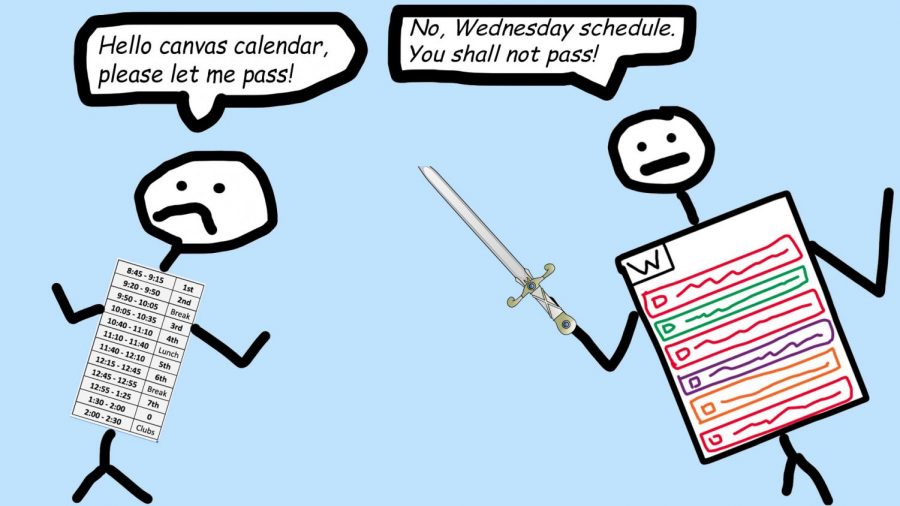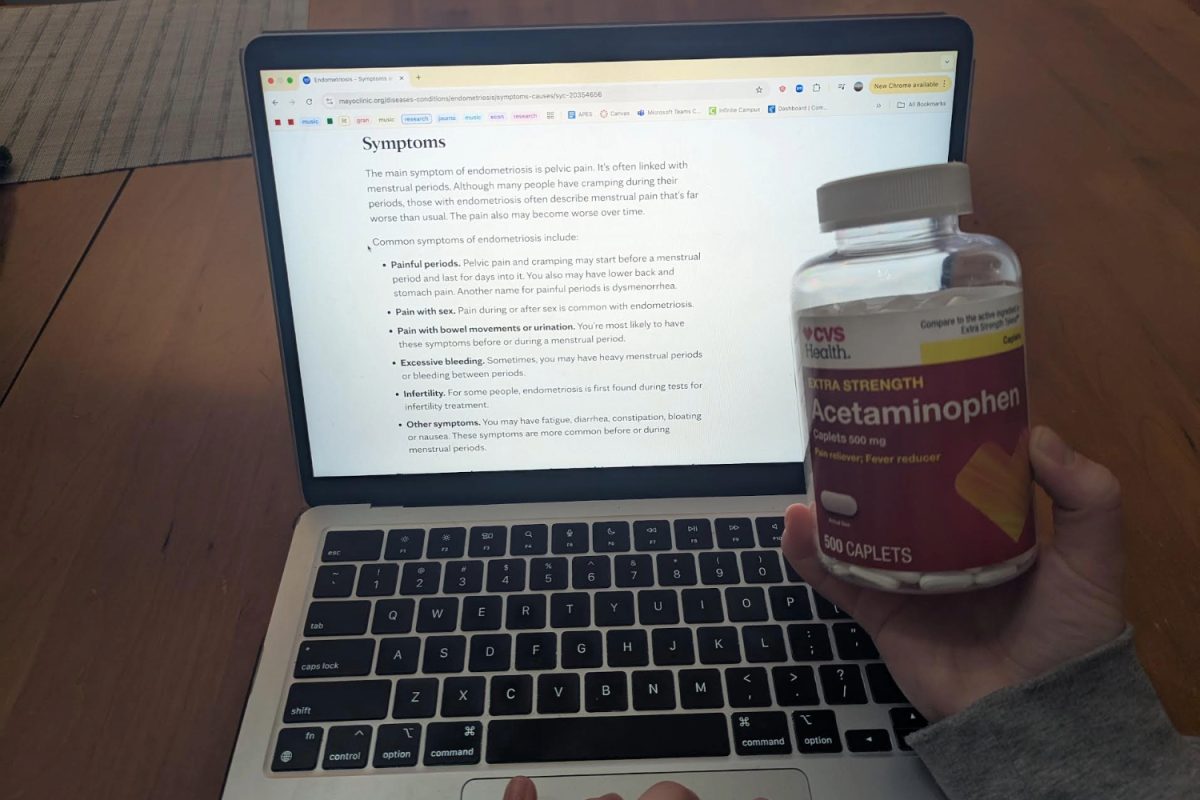A Carlmont student wakes up on Wednesday morning. While she is relieved that Zoom isn’t on her schedule today, she grudgingly opens her calendar to reveal an army of little bubbles. As she scrolls through the numerous titles, she feels the weight of each assignment adding to her schedule. She quickly moves on to get started.
One after another, she diligently unseals and eliminates these bubbles. Everything seems to be going alright until the clock strikes 2 p.m., and she realizes she still has one assignment remaining. She nervously opens it up to find out the assignment will take her longer than the 30 minutes she has left.
Letters are flying from her pencil, but the clock beats her to the finish. She sighs in defeat as her parents stomp up the stairs with the accompanying automated voice informing them of her alleged truancy.
While Wednesday’s asynchronous learning schedule gives students a break from virtual instruction, its current arrangement is burdensome to students, due to the tight deadlines and large amount of work assigned.
The schedule is designed to provide students with a 30-minute window for each class, during which they should independently learn. As part of this, the school takes attendance by requiring students to submit an assignment for each class as proof of presence. Although it seems reasonable in theory, in practice, it has become an issue where students are marked absent because they were unintentionally loaded with work.
While most teachers adhere to administrative guidelines that explicitly specify that no assignment takes a student more than 30 minutes, some teachers have their own interpretations of this idea, leading to a variety of consequences for the students.
The amount of effort and time required to complete an assignment varies drastically from week to week, from teacher to teacher, and from student to student. I’ve observed that some teachers embrace the idea that workload must be minimal, but others seem to outright disrespect the idea. In addition to this, no student can see in advance how much work the assignment will be based solely on the title. I’ve had work that took far longer than 30 minutes to complete and was forced to speed through other subjects to avoid running the risk of being marked absent. As I see it, there are only two options; to sloppily submit something for each class, or to prioritize and get marked absent in one or more classes. Neither option is optimal.
Other teachers consider Wednesday to be an excellent day to collect work from their students that have already been in the works for quite some time, in lieu of creating something specifically used to track attendance. For those who have a difficult time managing the workload, especially during a pandemic where numerous other factors could be affecting their schooling, this practice makes everything due on one day instead of having it evenly spread throughout the week; during in-person schooling, teachers often allot plenty of class time to students so they can complete their work comfortably. It’s easy to see how this could become both frustrating and discouraging for any student who is unfortunate enough to find themselves in this situation.
A survey of a small sample of students from Carlmont, mostly comprised of juniors, clearly demonstrates this trend. The average number of assignments per day, for the first few weeks of schools, is highest on Wednesdays and Fridays; however, Fridays have the benefit of two extra days to complete the assignments, Wednesday has the added restriction of a mid-day deadline.
A simple way to prevent this struggle could involve the creation of a rule which explicitly defines what should be used as an attendance assignment. An ideal assignment would be completely separate from any ongoing classwork, and should only contain a simple question that is relevant to the class; assignments that take thirty minutes or less to do, as the administration states. Anything from a two-sentence summary of a book from English class, to solving a single problem for math class would provide excellent proof that a student is indeed present and learning. A standard format, such as this one, would give students peace of mind, knowing they will not be continuously slammed with work during the middle of each week.























Alexandra Carmichael • Oct 4, 2020 at 5:05 pm
Thank you Pavel! This is the experience in our house as well. I sit next to my 9th grader all day on Wednesday, as it takes both of us to track down all the assignments (they’re not always on the Canvas dashboard), figure out the due times, understand the submission requirements, and prioritize the day. Then it’s a mad dash for her to get it all done by 3 pm, even with me keeping her on task, and we both end up very stressed. Forget about a break for lunch or a mid-day walk to clear her head. I agree that Wednesday assignments need to be shorter to complete, and due at 11:59 pm instead of 3:30 pm. As for the attendance calls, I get them almost every day despite the fact that my student has not missed a single Zoom class. I guess it’s the growing pains of everyone adjusting to online learning! I do appreciate how helpful and kind all the teachers have been – it sounds like they’re under a good deal of stress as well. Thanks everyone for hanging in there! Wishing everyone an easier week next week!
Audrey Carvalho • Oct 3, 2020 at 10:41 pm
So true! Thank you for this article! As I see my sophomore student going through the same process of stress and anxiety, I deeply agree. Weekend homework (and even for Labor day weekend!) is also starting to become a habit and I find this borderline.